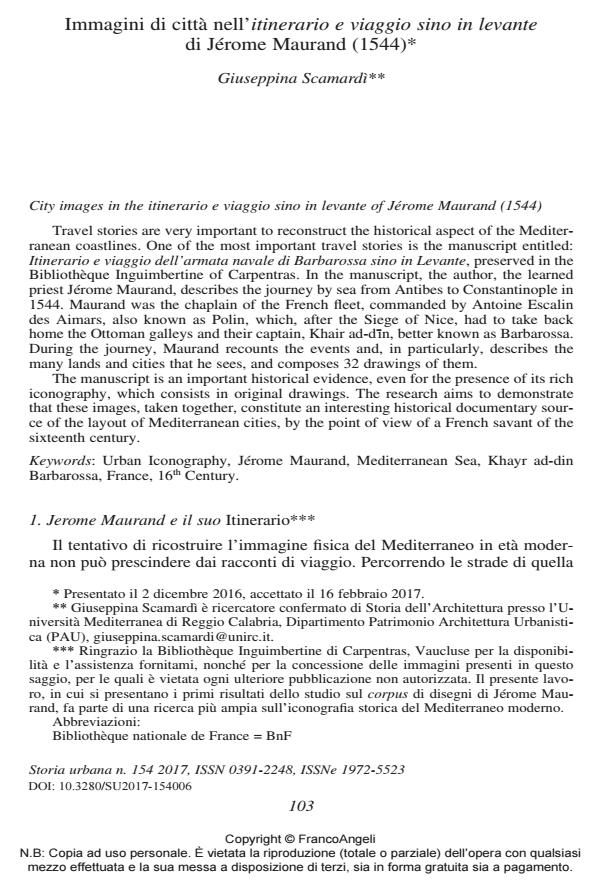City images in the itinerario e viaggio sino in levante of Jérome Maurand (1544)
Journal title STORIA URBANA
Author/s Giuseppina Scamardì
Publishing Year 2017 Issue 2017/154
Language Italian Pages 25 P. 103-125 File size 382 KB
DOI 10.3280/SU2017-154006
DOI is like a bar code for intellectual property: to have more infomation
click here
Below, you can see the article first page
If you want to buy this article in PDF format, you can do it, following the instructions to buy download credits

FrancoAngeli is member of Publishers International Linking Association, Inc (PILA), a not-for-profit association which run the CrossRef service enabling links to and from online scholarly content.
Travel stories are very important to reconstruct the historical aspect of the Mediterranean coastlines. One of the most important travel stories is the manuscript entitled: Itinerario e viaggio dell’armata navale di Barbarossa sino in Levante, preserved in the Bibliothèque Inguimbertine of Carpentras. In the manuscript, the author, the learned priest Jérome Maurand, describes the journey by sea from Antibes to Constantinople in 1544. Maurand was the chaplain of the French fleet, commanded by Antoine Escalin des Aimars, also known as Polin, which, after the Siege of Nice, had to take back home the Ottoman galleys and their captain, Khair ad-d¯ın, better known as Barbarossa. During the journey, Maurand recounts the events and, in particularly, describes the many lands and cities that he sees, and composes 32 drawings of them. The manuscript is an important historical evidence, even for the presence of its rich iconography, which consists in original drawings. The research aims to demonstrate that these images, taken together, constitute an interesting historical documentary source of the layout of Mediterranean cities, by the point of view of a French savant of the sixteenth century.
Keywords: Urban Iconography, Jérome Maurand, Mediterranean Sea, Khayr ad-din Barbarossa, France, 16th Century.
- Recent Articles on French History Jean-Pierre Hérubel, in French Historical Studies /2019 pp.154
DOI: 10.1215/00161071-7205281
Giuseppina Scamardì, Immagini di città nell’itinerario e viaggio sino in levante di Jérome Maurand (1544) in "STORIA URBANA " 154/2017, pp 103-125, DOI: 10.3280/SU2017-154006